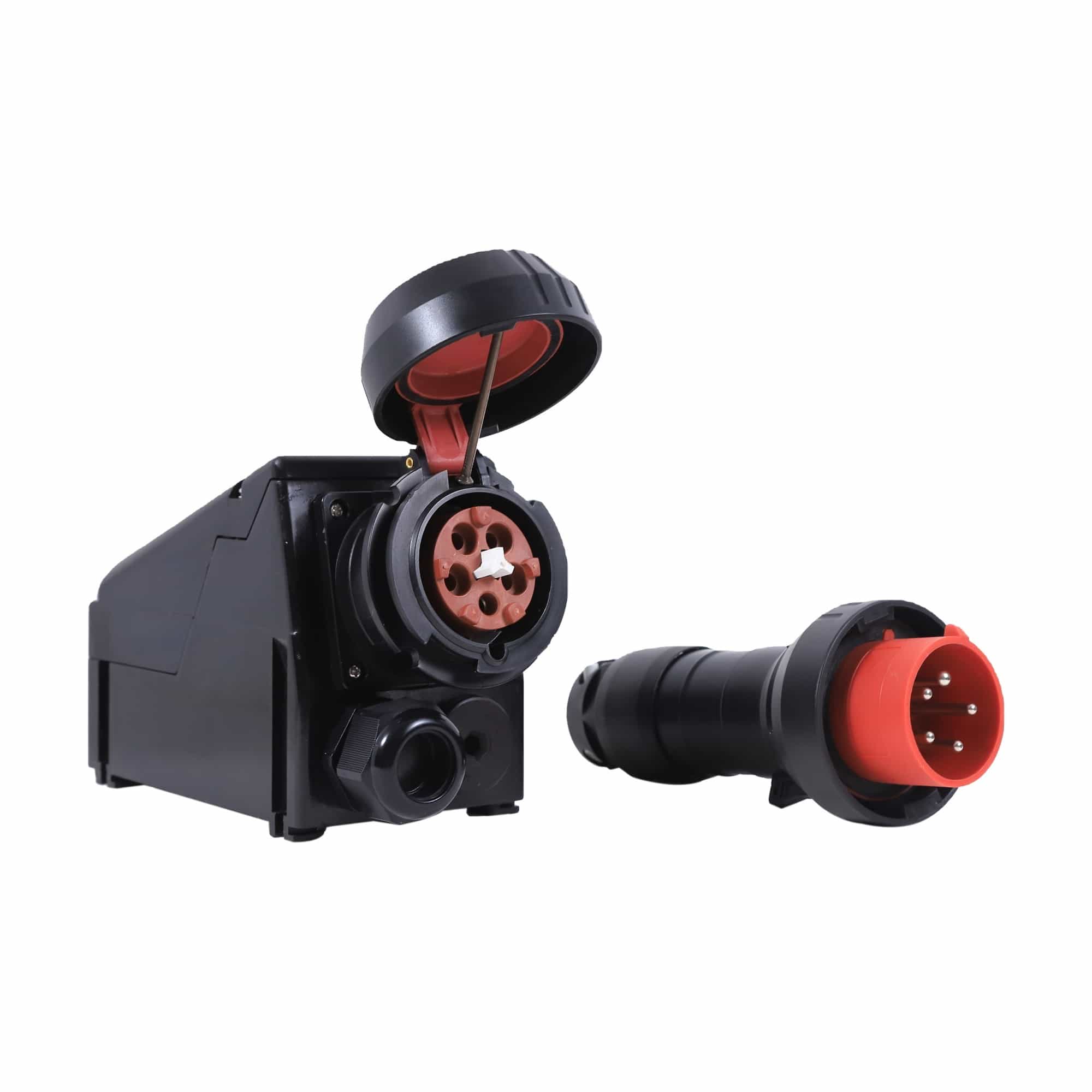Electrical signals can trigger explosions in sensitive industrial and refinery environments. The presence of flammable gases in many industrial spaces is a normal thing, and as a rule, in the design of the electrical systems of such industrial processes, we must use anti-explosion requirements. The explosion-proof plug socket is designed for the design of mobile systems in sensitive industrial spaces and refineries.
An explosion-proof socket and plug is a type of simple electrical outlet or plug designed with full degrees of electrical insulation. These sockets prevent leakage of electric current to the space outside the electrical system and prevent the possibility of explosion in dangerous environments. These sockets are specially designed to connect high current systems. To the extent that they can handle the high power connection of powerful motor equipment in heavy industrial and refinery processes and avoid any risk of electric current leakage.
What is the use of explosion-proof socket and plug?
Explosion-proof plugs and sockets are electrical plugs and sockets designed to prevent the ignition of flammable gases and vapors in the surrounding air. Explosion-proof sockets and plugs are designed and produced for the design of mobile systems in sensitive industrial spaces and refineries.
The moment of connecting electrical outlets is the most critical working condition of mobile equipment. Because there is always a risk of sparking at this moment. At the same time, any penetration of water or moisture into the socket will cause a spark. Even the moment you unplug the plugs from the outlet it causes sparks. As long as you are working in a typical industrial and workshop environment, such sparks are not a challenge. But the occurrence of these sparks in sensitive areas such as the refinery environment, which is prone to explosive gas leakage, is quite dangerous.
Explosion-proof sockets and plugs are designed to prevent any explosion caused by sparks inside the enclosure. It can also be said about the use of explosion-proof sockets and plugs that help prevent the ignition of vapors, gases and dust in the surrounding air. Sparks and electrical surges created during connection or disconnection can be fatal because if a spark leaks into the surrounding hazardous area, it can ignite the surrounding air and lead to a large explosion.
This explosion-proof equipment is usually used in industrial environments where there are volatile and flammable materials. The term explosion-proof does not mean that the use of explosion-proof sockets and plugs is intended to prevent explosion, but that they are designed to prevent sparks and electrical fluctuations. These equipments are designed so that sparks and electrical connections do not come out of the chamber and flammable materials do not enter the chamber.
The important features and applications of explosion-proof sockets and plugs are:
- The explosion-proof socket switch is usually housed in a tight, sealed enclosure. This design helps prevent any sparks or flames that may occur inside the device.
- Connections and entry points of explosion-proof sockets and plugs are tightly closed to prevent the entry of flammable gases or dust.
- Explosion-proof sockets and plugs are often made of materials that can withstand harsh environmental conditions such as corrosion. This issue also affects the use of explosion-proof sockets and plugs.
- Some types of explosion-proof sockets and plugs may include flame arrestors designed to prevent flame transfer from the inside to the outside of the enclosure.
Explosion-proof socket and plug components
The components of the explosion-proof outlet switch are carefully designed to minimize the risk of ignition in potentially explosive atmospheres. The outer casing is a critical component that is built to prevent any sparks, flames or arcing. The materials used for the outer covering of explosion-proof sockets and plugs are usually strong and resistant to impact, corrosion and environmental factors. The outer casing can be made of thick, compact plastic with an aluminum coating or GRP (Glass Insulating Coating).
The internal contacts and terminals of the explosion-proof socket and plug are designed to minimize the risk of sparks. They are often made of materials that are less likely to cause sparks. The purpose of this design is to prevent an electric arc that can act as a source of ignition. Also, all industrial and explosion-proof sockets use an interlock switch. This switch is equipped with a locking mechanism or an internal holder that firmly places the plug in the socket and eliminates the possibility of involuntary pulling out.
All kinds of explosion-proof socket and plug models
Explosion-proof sockets are produced in Exd and Exde models. These models show the degree of protection of the socket against the penetration of explosive gases. On the other hand, explosion-proof sockets and plugs are sold with a degree of protection from IP54 to IP67. In fact, these numbers are a measure to determine the protection of the electrical outlet against the penetration of dust and moisture. For example, the first number (5) in the IP54 model shows the level of protection against dust and the second number (4) shows the level of protection against moisture.
Conclusion
The anti-explosion socket is designed and manufactured to ensure the safety of electrical equipment in spaces prone to the presence of explosive gases. Since the power of electrical equipment in industrial spaces is high, their connection under the presence of voltage is prone to cause sparks. However, with the basic installation and use of all types of explosion-proof sockets and explosion-proof equipment, the risk of any explosion in certain industrial spaces can be completely eliminated, because these equipment are resistant to the penetration of any flammable materials and do not contain any flammable materials. .

